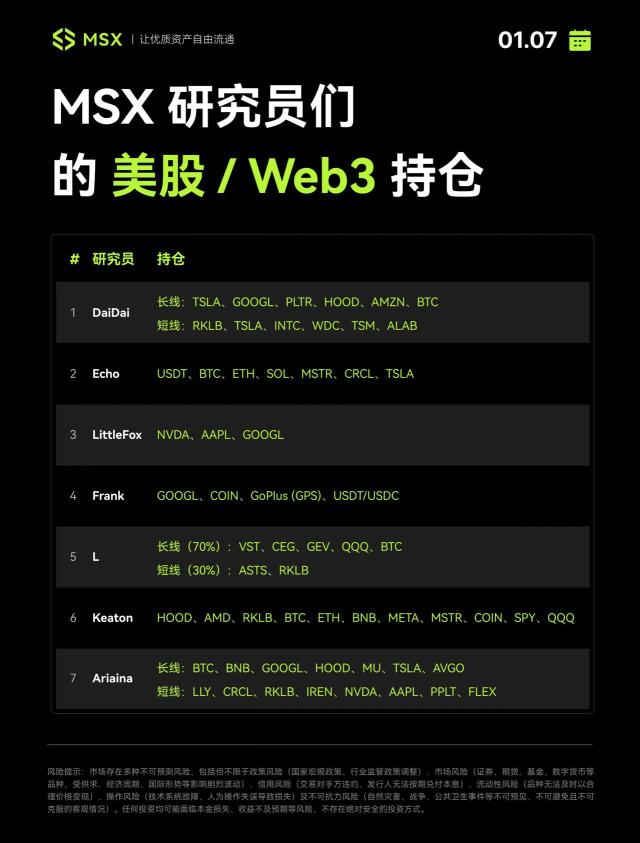 According to the official announcement, Binance Launchpool will launch the 60th project Scroll (SCR). Users can lock BNB and FDUSD to receive SCR Airdrop , and the mining process will start at 00:00 (UTC) on October 9, 2024. Odaily will launch SCR at 10:00 (UTC) on October 11, 2024 and open the SCR/ USDT trading pair.
According to the official announcement, Binance Launchpool will launch the 60th project Scroll (SCR). Users can lock BNB and FDUSD to receive SCR Airdrop , and the mining process will start at 00:00 (UTC) on October 9, 2024. Odaily will launch SCR at 10:00 (UTC) on October 11, 2024 and open the SCR/ USDT trading pair.
What is Scroll? Guide to hunting for Scroll project Airdrop
With the expansion of Ethereum, Layer 2 solutions are now the most optimal way to solve current problems. In this article, Unich Analyst will join readers to learn about Scroll, a Layer 2 solution highly appreciated by Ethereum founder Vitalik Buterin.
Reason for birth
The creation of Scroll was motivated by the limitations of Ethereum, specifically:
- Limited scalability : Ethereum struggles to handle large volume , resulting in high transaction fees and slow confirmation times.
- Lack of Compatibility : Current zk-Rollup solutions are mainly focused on the application layer (Application-specific), making it difficult to move DApps between layers 1 and 2.
Scroll was created to solve these problems by:
- Using zkEVM : Scroll uses zkEVM, a fully EVM-compatible zk-Rollup solution, providing a better development experience for developers. zkEVM allows Ethereum DApps to easily migrate to Scroll without major code changes, extending availability on Layer 2.
- Increased Scalability : Scroll uses zk-Rollups to process off-chain transactions, then creates compressed proofs to post to the main chain , increasing throughput and reducing costs compared to direct transactions on Ethereum.
What is Scroll?
Scroll is a Layer 2 on Ethereum that uses zk-Rollup technology to solve Ethereum's transaction speed and cost limitations. The project provides a zkEVM execution environment that is highly compatible with Ethereum, making it easy for developers to migrate Solidity applications from EVM Chain to Scroll.
Scroll Highlights
- zk-Rollup Technology : This is an efficient Layer 2 scaling solution, providing better scalability and security than other solutions.
- Highly compatible zkEVM : Scroll uses zkEVM, ensuring high compatibility with Ethereum's EVM, making it easy for developers to migrate applications without major changes in the source code.
- Ethereum Community Support : Scroll receives support from developers in the Ethereum community, giving the project access to the necessary knowledge and resources.
- Successful Capital round : Scroll has raised $80 million from reputable investment funds such as Polychain Capital, IOSG Ventures, Bain Capital Crypto, Variant,... affirming the great potential of the project.
How Scroll Works
Scroll operates on a three-layer architecture, each layer playing an important Vai in ensuring the security, performance, and scalability of the system:
Settlement Layer Layer
- Vai : This layer acts as the final validation layer for transactions on Scroll, providing data retrieval and ordering to the Scroll main chain . It also verifies the validity of proofs and allows users and dApps to send messages and assets between Ethereum and Scroll.
- How it works: Scroll uses Ethereum as its validation layer and deploys bridge and rollup contracts on Ethereum. This ensures all transactions are validated by Ethereum, providing a high level of security for Scroll.
Chain Layer
- Vai : This layer processes transactions sent to Scroll's chain and bridge contract on L1, generating L2 blocks. It also encapsulates transactions, uploads data and block information to Ethereum to ensure data availability, and sends proof of authentication to Ethereum for finalization.
- How it works: This layer consists of an Execution Node and a Rollup Node. The Execution Node processes transactions and generates L2 blocks. The Rollup Node encapsulates the transaction and uploads the data and proof to Ethereum for security and finality.
Proving Layer
- Vai : This layer is responsible for generating valid zkEVM proofs, verifying the correctness of L2 transactions.
- How it works: This layer consists of a group of provers and a coordinator. The prover creates zkEVM proofs, while the coordinator allocates proving tasks to the provers and forwards the proofs to the Rollup Node for finalization on Ethereum.
Scroll Products
Infrastructure for dApp development : Scroll provides the infrastructure for developers to build dApps using the Solidity language. The project inherits the security of Ethereum, providing fast speeds and significantly lower costs than Layer 1.
Development Ecosystem : Currently, Scroll owns:
- $1.2 billion TVL (Total Value Locked): Including assets bridged from Ethereum, this number represents the community's trust in Scroll.
- 250k transactions per day: Currently, the Scroll ecosystem has processed more than 80 million transactions, with a frequency of 250k transactions per day, showing a high level of activity.
- Over 5 million wallet addresses: The Scroll ecosystem has attracted over 5 million users, proving the appeal of the project.
- Dozens of Active dApps: Scroll is home to hundreds of active dApps, with nearly 30 projects in DeFi, AMM, Lending, Yield, Launchpad, Derivatives, Liquidity Manager, etc.
SCROLL Token Information
Scroll has not made any official announcement regarding the project's Governance Token , so we will update details as they become available.
Pre-market SCROLL trading guide on Unich
- Access Unich's OTC trading platform
- Connect your wallet to Unich's pre-market OTC platform
- Select SCROLL trading pair to buy or sell on Pre-Market
- Deposit collateral and complete payment
Scroll project Airdrop hunting guide
There are many ways to hunt Airdrop with Scroll, but I will focus on the most effective methods and those with the highest chance of getting Airdrop .
Interact with the root bridge
Visit the original Bridge of the Scroll project.: LinkTransfer assets from ETH chain to Scroll chain (ETH, USDC, USDT, etc).
Note that you can also use bridges of dApps that interact with the Scroll chain to increase your chances of receiving Airdrop like Orbiter, Owlto
Interact with dApps
Access the Scroll Session and interact with the listed dApps.
There are 2 sessions now and the site will update the score after 24 hours, so this could be one of the factors that help users get Airdrop.
Some tasks such as:
- More liquidation: Ambient, Nutri.
- Borrow and lend at: AAVE, Rho Markets etc.
Development Team
- Sandy Peng (Co-Founder) : Graduated with a Master of Laws from LSE and a Bachelor of Arts in Society and Politics from the University of Cambridge.
- Ye Zhang (Co-founder) : Graduated with a Bachelor's degree in Electrical Engineering from Peking University, experienced in Blockchain and zkSNARK research.
- Haichen Shen (Co-founder) : PhD in Computer Science from the University of Washington.
Investor
Scroll has raised a total of $80 million in two rounds of Capital:
- Series A (February 21, 2022) : $30 million, led by Polychain Capital.
- Capital round (06/03/2023) : $50 million, valuation $1.8 billion, from funds such as Polychain Capital, IOSG Ventures, Bain Capital Crypto, Variant, etc.
Pros and Cons of Scroll
Advantage
- Security: Scroll uses Ethereum as the authentication layer, ensuring high security for transactions.
- Efficiency: Scroll uses ZK-Rollups to process Off-Chain transactions, reducing the load on Ethereum and increasing performance and processing speed.
- Scalability: The three-tier structure allows Scroll to process large numbers of transactions, making the system scalable and able to meet the growing needs of the ecosystem.
- High Compatibility: Scroll's zkEVM offers a high level of compatibility with Ethereum's EVM, attracting developers and DeFi projects operating on Ethereum.
- Community Support: Scroll receives support from the Ethereum community, providing the project with access to knowledge, resources, and a community of users.
Disadvantages
- Complex Technology: zkEVM is a complex technology that requires a highly specialized technical team to develop and maintain.
- Fierce Competition: The Layer 2 market has strong competition with projects like zkSync, StarkNet, Taiko, Linea, etc. Scroll needs to compete fiercely to retain developers and users.
- Transaction Fees: Scroll currently has higher transaction fees than other Layer 2 , reducing the competitiveness of the ecosystem.
- No Token yet: Scroll has not launched a Governance Token, and there is no mechanism to incentivize users and developers to participate in the ecosystem.
Personal views on Scroll's potential
- High compatibility of zkEVM : Scroll is one of the few Layer 2 projects using zkEVM, providing high compatibility with Ethereum's EVM. This allows developers to easily migrate Solidity applications from EVM Chain to Scroll, attracting DeFi projects and dApps operating on Ethereum.
- Growing Ecosystem : Scroll is building a diverse ecosystem with many dApps and DeFi projects. Attracting quality DeFi projects and dApps will help Scroll's ecosystem grow strongly, attracting more users and developers.
- Strong Community : Scroll is supported by the Ethereum community, including developers, investors, and users. A strong community will help Scroll grow quickly and gain a lot of support.
- Successful Capital Round : Scroll has raised $80 million from reputable investment funds such as Polychain Capital, IOSG Ventures, Bain Capital Crypto, Variant, etc. This shows the investors' confidence in Scroll's potential.
- Cutting-edge technology : Scroll uses zkEVM, which is considered a potential technology to scale Ethereum. zkEVM offers higher scalability, security, and efficiency than other Layer 2 solutions.
Conclude
Scroll is a promising Layer 2 project that provides an efficient and secure scaling solution for Ethereum. However, Scroll still has challenges to overcome such as complex technology, fierce competition, and high transaction fees. The project needs to continue to develop, optimize technology, and build a strong ecosystem to attract more developers and users, affirming its position in the Layer 2 race.











